Improving Posture: Exercises to Correct Excessive Low Back Curve

Improve Your Posture: How to Correct an Excessive Lower Back Curve
Are you aiming to improve your posture? Correcting an exaggerated curve in your lower back is achievable with targeted exercises.
Experiencing lower back pain? This discomfort often stems from an abnormal arch in your spine, known as a larger-than-normal lordotic curve.
This guide unveils essential exercises designed to rectify an increased curve in your lower back posture. After mastering the foundational routines, you’ll find advanced exercises to further enhance your posture.
See Also: Advanced Posture Exercises For Your Rounde Upper Back
Understanding Posture: Addressing Hyperlordosis
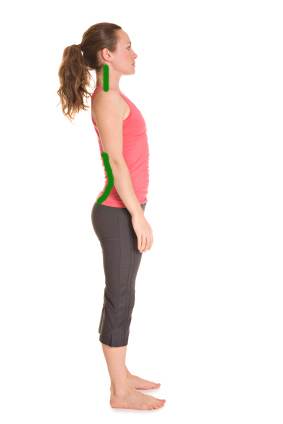
The natural curves in your lower back and neck, known as lordosis, play a crucial role in your overall posture. Normal lordosis is common and healthy.
However, the internet is rife with misinformation regarding posture correction. As a practising chiropractor, my goal is to provide you with accurate and reliable information to navigate posture improvements effectively.
Excessive curvature, or hyperlordosis, refers to an overpronounced curve in the lower back. “Hyper” indicates an excess, much like the term “hyperactive.” Conversely, “hypo” denotes a deficiency, indicating less curvature than normal.
It’s possible to exhibit hyperlordotic posture without experiencing pain. Nevertheless, addressing this condition early is vital to reduce the risk of developing osteoarthritis in the joints and discs of your lower spine.
See Also: 4 Upper Back Exercises To Improve Posture
Correcting Hyperlordosis: Enhancing Appearance and Reducing Risk
Proactively adjusting a hyperlordotic posture not only mitigates health risks but can also refine your silhouette. Through specific exercises, we can realign your pelvis, diminishing the appearance of lordosis without altering your body’s natural shape.
Causes of Hyperlordosis Include:
Tight Muscles:
- Erector spinae muscles along the spine.
- The hip flexor muscle is known as the psoas.
Weak Muscles:
- The gluteus maximus shapes your buttocks.
- Abdominal muscles, particularly the rectus abdominis or “six-pack” muscles, remain concealed for many under a layer of fat.
Hyperlordosis results from an imbalance between overly tight muscles pulling in one direction and weak muscles failing to compensate, exacerbating the spinal curve.
Correcting Your Posture: Balancing Muscle Strength
To amend your posture, begin by stretching the tight muscles before strengthening the weaker ones. This balanced approach is key to correcting an excessive lower back curve and improving your overall posture.
A: Arch Your Lower Back Like The Cat Pose in Yoga – Stretch your low back erector spinae (low back muscles).
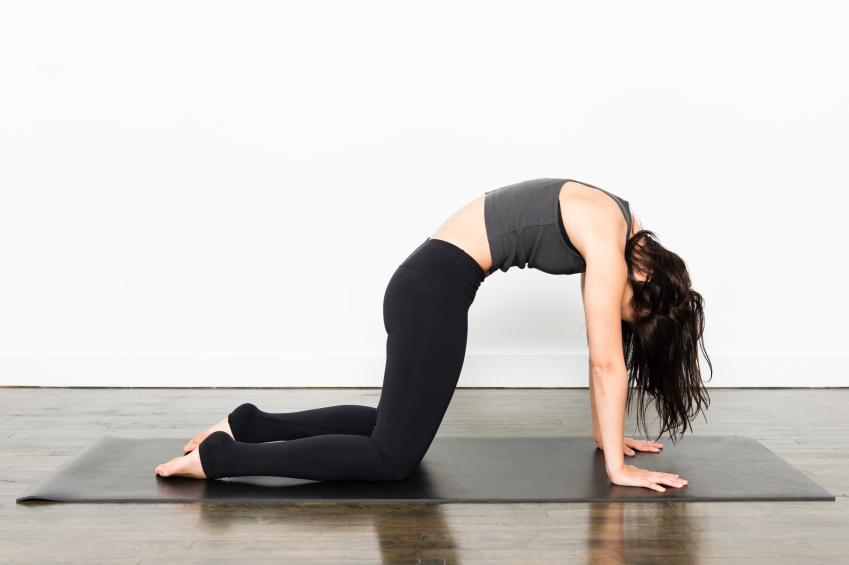
- Get on all fours with your hands under your shoulders, your knees under your hips.
- Arch your upper back and lower back like a cat does when it’s scared.
- Hold for 30 seconds – do 3 sets.
- If you have a disc problem, or it hurts to arch and flex your back, this exercise is not for you.
A: Child Pose: Second stretch for your low back erector spinae (low back muscles).
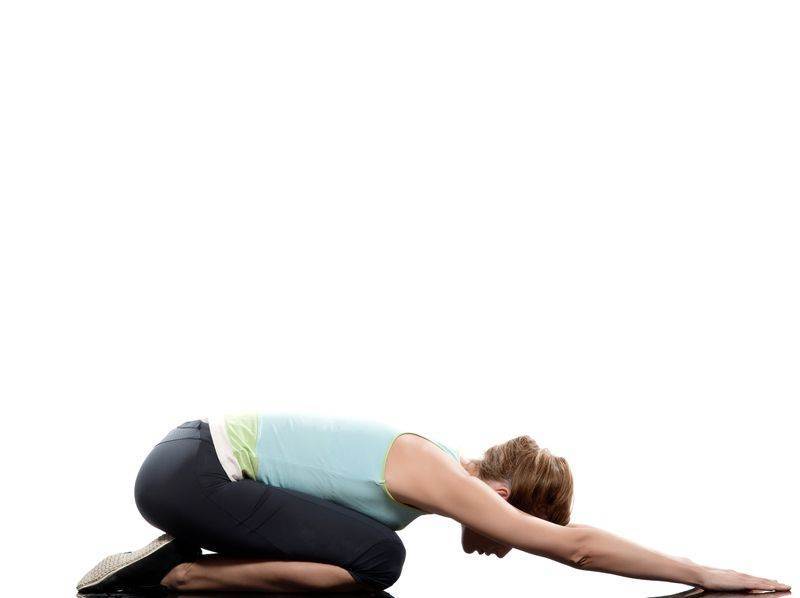
- Get on your hands and knees.
- Sit back onto your heels with your arms reaching out as far as they will go.
- Your head is looking down – neck down.
- Hold for 30 seconds – do 3 sets.
A: Lunge Pose: You need to stretch the hip flexor muscles (psoas muscles)
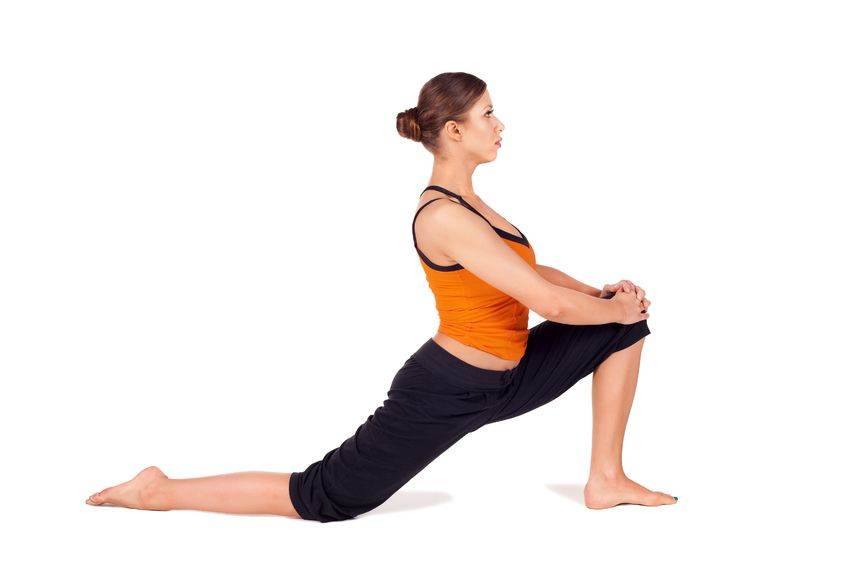
- Get down on your knees.
- Put one leg forward with the knee bent to 90 degrees.
- The other leg is back with the knee very slightly bent resting on the floor.
- You should feel the stretch in the front part of your hip.
- Hold for 30 seconds and do 3 sets.
Second, strengthen your gluteus maximus (your butt-shaping muscle) and abs (your rectus abdominis muscles or six-pack muscles)
I will give you two exercises to strengthen your gluteus maximus. The squat and the single-leg squat.
B: The Chair Squat To Strengthen Your Gluteus Maximus
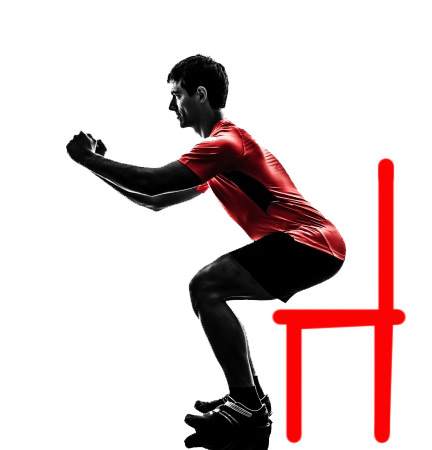
- Stand with your back to the chair.
- Your feet should be shoulder width apart with your feet turned out slightly
- Make sure to not arch your lower back when lowering yourself down to the chair.
- Touch the chair and come right back up 10 – do 3 sets.
B: Single Leg Squat To Improve Your Posture. When you can do three sets of chair squats easily, try single-leg squats.
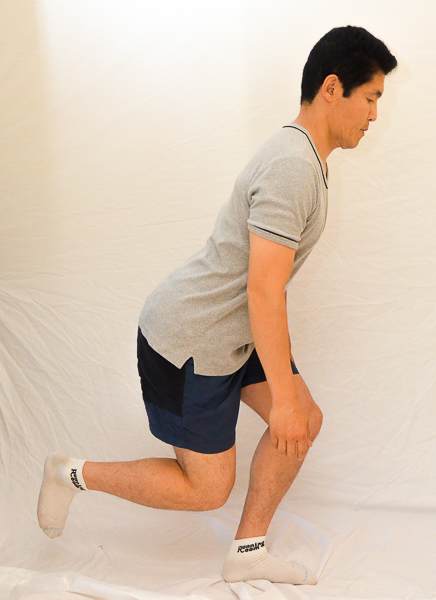
- Always stand near a wall so, you can support yourself if you lose your balance.
- Stand on one leg.
- Stick out your butt as much as you can while bringing your other leg back, dragging it on the floor to keep balance.
- Go as far as you can with the back leg.
- Don’t let your knee go forward past the big toe
- Do 3 sets of 10.
Strengthen Your Abs To Help Your Posture
B: Front Planks strengthen your abs without putting dangerous pressure on your discs like crunches and sit-ups do.
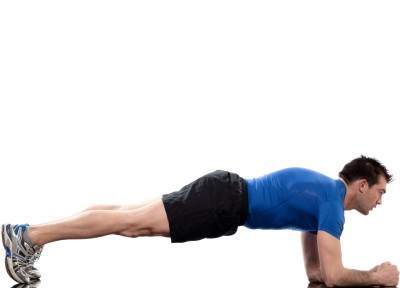
- Lie face down.
- Toes together and your arms shoulder width apart.
- Hold this position without raising your butt too high
- Your body should form a straight line. Look in the mirror.
- Hold for up to 1 minute at a time. – do the exercise 3 times.
B: Advanced Abs Strengthening To Help Your Posture

- Get a basketball or medicine ball.
- Get in the front plank position.
- Balance with your forearms on your medicine ball/basketball.
- Pull your arms in toward you while balancing on the ball.
Feel free to share your questions, thoughts and experiences in the comments below, and don’t forget to connect with us on Facebook for more updates and tips on improving your shoulder health. We’d love to hear your opinions on who you consider the best Toronto chiropractor.
Related Categories: Back Pain, Hip, Posture, Shoulder


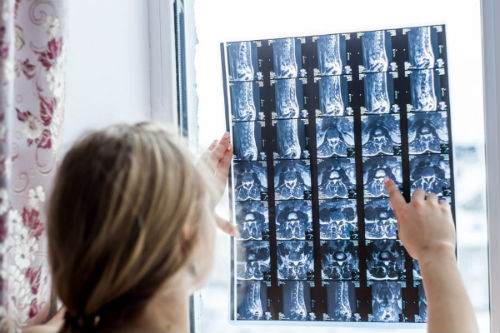
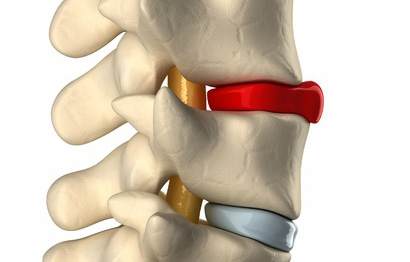

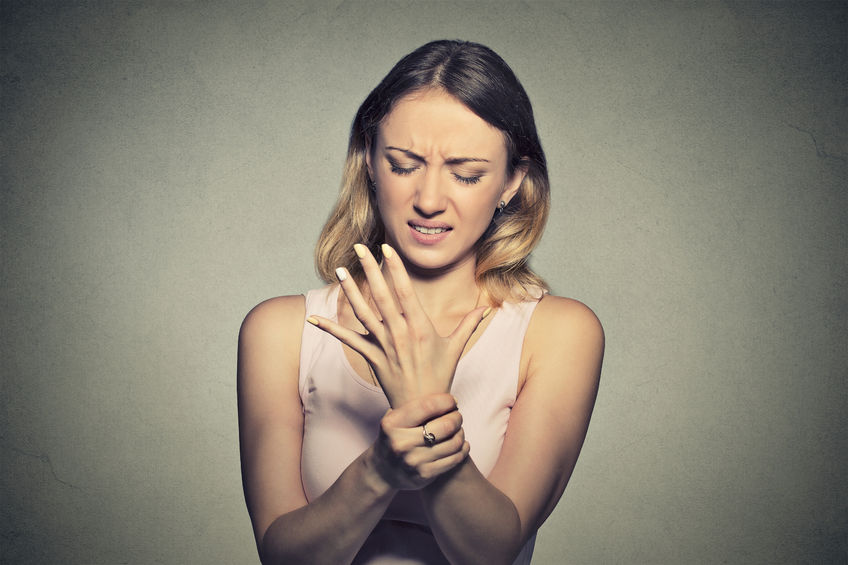

Hi, I have just noticed I have a huge dent in my lower spine.
I always suffer from back pain and often feel like the curve of my spine is digging in to me. Also if I lay on my stomach this also causes pain to my lower spine feeling like it’s really digging in to me and also feel like my back is going to get stuck when bending over or laying on my stomach.
Does this sound like hyperlodosis?
Thankyou
Author
Thanks for your question Sando. It sure sounds like hyperlordosis. Why don’t you try out the exercises and see how you do after a few months.
Hope that helps your hyperlordosis. If you have any more questions for this chiropractor in downtown Toronto I will do my best to answer your questions. This is an opinion and not a recommendation.
I have a prominent curve in my Lower back it has been there since I was pregnant with twins 26 years now it’s just automatic that I stand with what seems like I’m pushing my stomach out I would like to fix this so I don’t look so funny from the side
Author
Thanks for your comment Tammy. Then these should be the perfect exercises for just such a situation. Just try them out. The problem is if you are not doing them properly they might not help. Also, you have to consistent and do them for months before there are any changes. Do them 6 or 7 days a week for months. You may even have to carry on with them 1/day after that.
Hope that helps your posture.
Can I do these exercises daily to correct my lumbar lordosis? Is there any adverse effect, if I try them regular?
Author
Thanks for your question Robin. If you have a lumbar lordosis that is normal you should not do them. If you have hyperlordosis you may benefit from doing the exercises. You can have an adverse effect if you don’t have hyperlordosis. If you follow the tests in the article you will know if you have hyperlordosis or not.
Hope that helps your possible hyperlordosis.
Some really great tips here. I am terrible at sitting slouched at my desk all day and need something to take away this back pain. Do you have any tips on things I can do to sit straight at my desk?
Author
I think this article should help you. Hope that helps your slouched posture.
Hey – I just want to ask another thing which for me is very important. How much height can I expect from fixing lordosis? I am 21, 5’8. I know you said a small amount, but that’s relative, because 1 inch for instance, for me, is a lot. Thanks again!
Author
Thanks for your question Miro. If your hyperlordosis is severe it might be 1 inch. More likely you will get 1/2 inch if you do everything properly and remain diligent and consistent. This is an opinion, not a recommendation.
Hope that helps your posture.
how accurate is the back to the wall test for hyperlordosis(I can get up to my wrist in between my back and wall)? I have no chronic back pain but it does get stiff occasionally which seems normal to me. And can you correct this alignment if it is unnatural so to speak?
Author
Thanks for your question Ryan. You might be altering the results depending on how close your feet are to the wall. Also, the flexibility of your spine has a factor. Really if you want measurements and accuracy you need an X-ray taken from the side. However, most radiologists don’t measure the angle of the curve they simply eyeball it. There are published results that are quote “normal” for men and women in the Journal Spine but like I said you will not likely get a radiologist to measure the angle for you. Nor will they likely know what the results said in the Journal spine. I have never seen any X-ray report where they check the angle of lordosis in the spine.
Having said that you might be able to find one that will do that for you.
Hope that clarifies things for your posture. If you have any more questions for this downtown Toronto chiropractor I will do my best to give you a great answer.
Hello, I believe I am suffering from a pretty bad case of lumbar lordosis, and I have been a competitive swimmer for 11 years. COULD swimming affect this? Also, my ribs are very wide. I am a thin person, at the height of 5’8″ and weighing around 125 lbs, but my wide set ribs make me look a bit bigger, and my ribs didn’t used to be wide like this. Could this have been caused by lordosis? And if so, if I fix my lordosis will my ribs become less prominent? Thank you!
Author
Thanks for your question Amy. Lordosis is the normal curve of your neck or lower back. Hyperlordosis is too much of a curve.
Answers to your question:
1. Hyperlordosis cause wide ribs? No hyperlordosis does not cause widening of the ribs.
2. You can’t change the width of your ribs. Chances are you are noticing them more as you may have lost weight.
This is an opinion and not a recommendation.
Hope that helps your hyperlordosis. If you have any more questions for this downtown Toronto chiropractor I will do my best to give you useful answers.
These exercises all make great sense for dealing with hyperlordosis. I have a pretty pronounced case of it, and I definitely suffer from lower back tightness and discomfort, but could this be causing my upper back pain as well? I struggle the most with tightness between the shoulder blades.
Author
Thanks for your question Camille.The best thing for that from my point of view is to do three things.
1, Improve your posture by using a lumbar support roll while at work.
2. Always interrupt your posture by getting up every 2 hours or less and walking around.
3. Using a foam roll on your back. Look at exercise #4. https://www.bodiempowerment.com/advanced-posture-exercises/
Hope that helps your posture and the tightness / discomfort between your shoulder blades.
Hello. I have had lumbar lordosis for more than 3 years, I am 21 years old. Do you think I can completely fix this even at this age? Also, by the look of it, the lunge pose and the basketball exercise don’t also increase the curve?
O, and I want to ask you – after how much time can I expect any knd of results? Does swimming help? If yes, which positions? I sit down a lot, can that slow the process? Will fixing lordosis add height?
Author
Thanks for your question Miro. The lunge pose is done without increasing the curve as much as possible. For some that are very flexible it is not possible to stretch the psoas muscle (hip flexor) without some extension. Most people will be able to do it without extension but a significant number of people have to extend to stretch the muscle.
Remember though that the muscle needs to be stretched in order to change the posture. So for some people they temporarily go into extension but overall they improve their posture after all the stretches are combined along with the strengthening.
Answers:
1. How much time? Depends on a 100 factors including your dilengence, how often you do the exercises, doing the exercises properly, your age, how unstable or stable your spine is? So answer can be from a month to years.
2. Swimming help? No
3. Sitting won’t make this posture worse
4. Fixing hyperlordosis, will add a bit of height, that only you will likely notice. People may notice your improved posture though.
Hope that helps your understanding of your posture. If you have any questions for this chiropractor in downtown Toronto I will do my best to give you a useful answer.
Wow, really didn’t expect this kind of dedicated reply – thanks a lot! The fact that you say it’s possible to be given height from correcting this really pleases me since I do have a problem with my rather short 5’8 stature. Can you offer me an e-mail or some way I can contact you? I really want to come with images and a more detailed discussion about this because I also have done a lot of research about this and have a lot of questions and I really see in you the most dedicated online doctor do talk about this. Thanks a lot!
PS: Maybe you can’t email me your email address?
Author
You are welcome, Miro. I don’t give out my email as I am already giving you people a lot of my time. If you really want some help you should contact your local chiropractor to see if they can help you. You can have a proper physical exam this way. Online you cannot be examined.
Hope that helps your posture.
Hi Dr. Nakamura!
This article has been very useful for me. Thank you very much.
I have a question tough; any alternative excercise por planks? Any good abs exercise to correct hyperlordosis? I have the idea that I need to strenght the “inner” abs.. and I feel the need to strenght my abs more than with just planks!
Thank you very much!
Author
Thanks for your question Andres. You can strengthen the transverse abdominis to help. That’s a line of thinking that some people think are better than just strengthening the abs the regular way. https://www.youtube.com/watch?v=p6T2fv2q_yk
Hope you that helps your posture.
Hi Dr. Nakamura
I’ve only discovered that I have lumbar lordosis. I’m a 21-year-old guy. Should I begin by following the above exercises? Are there any other tips that may be relevant that you could provide? I would be truly grateful for a response.
Kind regards
Author
Thanks for your question Tom. Yes, these help many people with hyperlordosis. Remember it’s normal to have a curve in your lower back. Just not to have too much of a curve. You should first see if you have too much of a curve by standing with your back to the wall and seeing if you can pass your palm behind your back which is normal or your fist which is a little too much. If this is true then you should do the exercises in this post. This is an opinion and not a recommendation.
Hope that helps your possible hyperlordosis. If you have any questions this Toronto downtown chiropractor will do his best to give you a useful answer.
Many thanks for that rapid response Doctor. When I stand up against a wall, I can pass my hand through but not my fist. Having said that, I still think the curve is quite pronounced. Would it be possible to send you a picture privately?
Tom
Author
Thanks for your question Tom. IF you did the test and you can feel both the hand with your lower back than you are likely fine.
Hope that makes you feel better about your posture.
Dear Dr. Nakamura,
I was diagnosed with L3, L4 & L5 disc herniation about 6 months ago. Up until then I would run about 20 km’s a week most of my adult life. Now I walk about 5 kms a day. I am very limited in my flexibility but my glutes have always been very tight. Now I struggle to put on socks and shoes and think twice before I pick up anything. I have tried physio and pilates but they have not proven beneficial – some of the exercises caused my discs to herniate and then I experienced sciatica down my left leg – numbness not pain. I visited an osteopath and he did a few manipulations which gave me more flexibility in my pelvis (he said that my right pelvic joint was causing the problem).He told me to stop all exercises and just focus on the bananasana once a day, but a few days ago I think I did it too deep and i could hardly get off the mat! At this point I just need to know 2 things: Which exercises can I do without causing further herniation and will I be able to run again? Would really appreciate your professional advice and feedback. In gratitude, Brigid
Author
Thanks for your question Brigid. As you know certain exercises can make you worse. The problem is your disc may be going out the in a way that is not typical. For example, if your disc is going out to the side or front the typical exercises will make you worse. You likely need your exercise modified so they suit you.https://www.bodiempowerment.com/herniated-disc-part-2-the-best-exercises-for-your-herniated-disc/
You can try these exercises but you need someone like a chiropractor that can modify them to suit you.
Hope that makes help your posture and lower back pain. If you have any more questions for this Toronto downtown chiropractor I will do my best to give you a sensible answer.
Thank you Doctor. I believe I have hyperlordosis and I’m currently doing pilates to strengthen my core. My question is what cardio exercises can I practice that won’t hurt my lower back… I used to walk and run but the pain is too much that I stopped. Thank you
Author
That’s a great question Razan. Yes, you most likely have hyperlordosis if you have trouble with running and walking. You can do cycling, spinning and swimming in either side stroke or front crawl. Stair master in a slightly bent-over position which most people do anyways should also be fine. The stair master is the only one that may aggravate you. Others should be fine unless you have other issues. That’s my opinion anyways.
Hope that helps your posture. If you have any questions for this downtown Toronto chiropractor I will do my best do give you a useful answer.
Hi Dr. Nakamura,
Thank you for the insightful post. I believe that I suffer from hyperlodosis. However, I am not too sure if it is a result of tight and weak muscles because I frequently practice the exercises that you recommended to fix the problem. Could it be a result of something else besides tight and weak muscles?
Kindly please advice. Thank you!
Author
Thanks for your question Sherilyn. Your hyperlordosis can be coming due to spondylolisthesis which a fracture that occurs in gymnasts, cricket players, American football players most of the time without them knowing it. Osteoporosis if you are older. Those are a couple of different causes. Also, you may not have hyperlordosis as it is very subjective. That’s my opinion anyways.
Hope that helps your possible hyperlordosis. If you have any more questions for this downtown Toronto chiropractor I will do my best to give you a useful answer.
I am trying your exercises but i don’t feel any stretch in back or hips. I am not sure if I m doing it correctly. Can you share some videos
Author
Thanks for your comment Bhupendra. http://images.agoramedia.com/EHBlogImages/everyday-fitness/2014/08/SeatedForwardFold-p239.jpg
Why don’t you try this stretch instead of the child pose, as you are likely very flexible. https://www.bodiempowerment.com/wp-content/uploads/2017/03/56080097_s-1.jpg
This is an opinion and not a recommendation. If you have any more questions for this downtown Toronto chiropractor I will try my best give you helpful recommendations.
Hope that helps your posture.
Hi sir. I am suffering from hyperlordotic from past four years. Firstly I understand that my Ted is going out so I started running 3 k.m. daily.but later I understand this is another problem.
I started your exercises.
My question is
In how many days I will reach to good posture?
Am I start dieting also?
Is running injuries to recover good posture?
I am waiting for your reply with hope…
Author
Thanks for your question Aman. Not sure your mean by “I understand that my Ted is going out”.
1. You ask how many days to reach good posture but it is more like how many months, which depends on if you are doing the exercises correctly or if the exercises are done with right frequency, everyday for many months. You might see a difference after a month or two. Also, depends on many other factors including how bad the curve is.
2. Unless you are overweight it won’t affect the posture.
3. Running injuries and posture? If you have hyperlordosis, this may cause lower back pain. Your question is too general. You can have lower back pain to foot pain with running injuries.
The above are opinions and not recommendation.
Hope that helps your posture. This downtown Toronto chiropractor will help do his best to answer your questions.
HI! My name is Lucy and I have a 13 year old daughter who has been a gymnast since she was a baby. When ever I see her standing, her lower back is always curved a lot, and her stomach is sticking out. Lately she has had some lower back/butt pain. I’m wondering if the two are related. I read the article you have online and looked at the exercises. She is a gymnast and so she is already very strong and flexible. she also does all of these exercises already on a daily basis. I don’t know what to do and I don’t know how to help her so if I could get some feedback from you, that would be wonderful.
Author
Thanks for your question Lucy. While she may be doing the exercises every day the routines in gymnastics involve a lot of extensions. So the extensions (going backwards) like a back handspring, back walkover are far more pressure than doing these exercises in this article trying to fix the extension exercises. More importantly, it would be a good idea to get an X-ray for a gymnast with lower back pain. You want to rule out a pars fracture that happens with many gymnastics. Not from trauma but from repetitive extensions.
You might hear pars fracture or spondylolisthesis when you get the X-ray report or the X-ray report may say that there is no problem which is what you want to hear. That’s my opinion and not a recommendation. I think it would be prudent to get an X-ray based on what you have told me so far. If you have any questions this downtown chiropractor will try his best to give you a helpful answer.
Hope that helps your daughter’s posture.
Thank you
Author
You are welcome.
Hello! About how long will it take for these stretches to start improving my back?
Author
It will take at least a month before you start to see changes, Kate. Hope that helps your posture. This downtown Toronto chiropractor is here is you have any more questions.
Thank you for sharing. I will try these in the coming weeks.
Author
You are welcome Yolanda. I hope you feel your posture is better in the coming months. I’ll answer any more question right here at this little downtown Toronto chiropractic clinic.
I am having a hollow back. My age is 25.it doesn’t appears good.it looks like butts going out and posture of a girl with big butts.How to reduce the butt size and remove the hollow back to normal posture.
Author
Thanks for your question Alok. Try out the exercises and it will help the hollow back and butt size as they are part of the same problem. This is an opinion and not a recommendation.
Hope that helps.